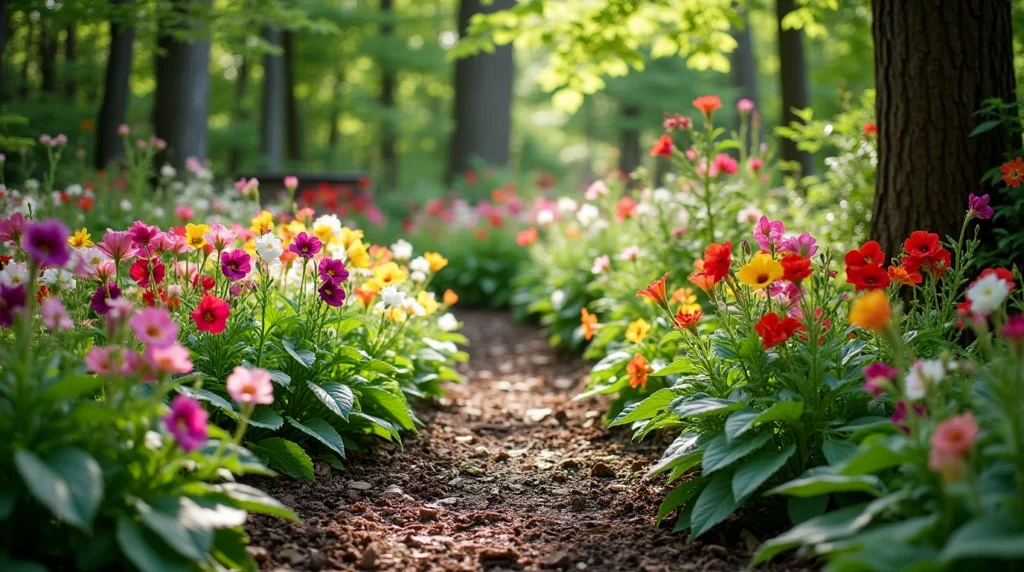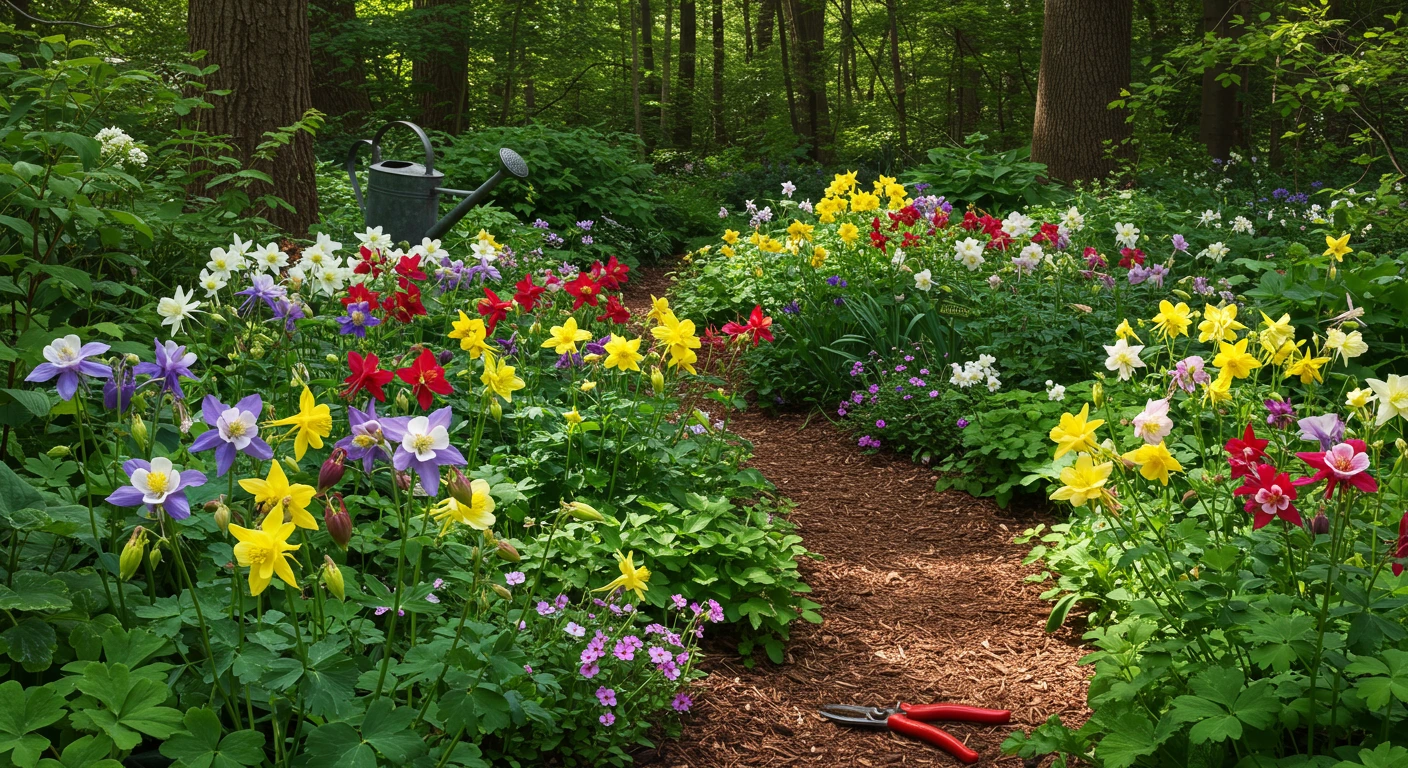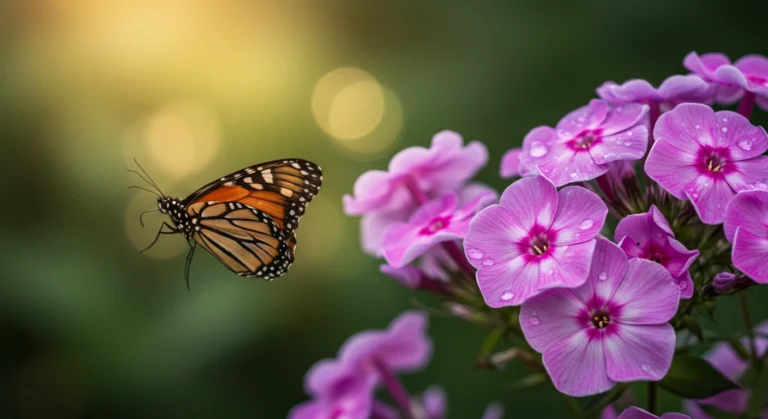Columbines: How to Grow and Maintain Stunning Garden Flowers
Did you know that only 37% of gardeners successfully grow thriving Columbines on their first attempt? These enchanting perennials with their distinctive spurred blooms might look delicate, but they’re actually quite resilient when given the right care. Many gardeners struggle with lackluster flowers or plants that fail to reach their full potential. Whether you’re a novice or experienced gardener, mastering the art of growing vibrant Columbines can transform your garden into a showcase of stunning, nodding blooms. In this comprehensive columbines gardening guide, we’ll explore five essential tips that will help you achieve those picture-perfect blooms that grace the covers of gardening magazines.
Table of Contents
Essential Tools and Materials
Before diving into our Columbines care tips, gather these essential items for success:
- Quality potting soil with good drainage (substitute with garden soil amended with perlite)
- Balanced, slow-release fertilizer (10-10-10 works well)
- Mulch (organic options like shredded bark or compost are ideal)
- Watering can or drip irrigation system
- Garden pruners for deadheading
- Shade cloth (optional for hot climate regions)
- Plant markers (helpful for identifying different Columbines varieties)
The rich, jewel-toned blooms of Columbines deserve quality materials that will support their distinctive growth habits and flowering potential.
Timing
When growing Columbines, timing is everything. These perennials typically take 2-3 years to reach flowering maturity from seed, which is 30% longer than many common garden perennials. For quicker results, purchase established plants that will bloom in their first season. The best planting time is early spring or fall, allowing roots to establish before extreme temperatures arrive. Expect blooms to appear in late spring through early summer, with a flowering period lasting 4-6 weeks depending on your climate zone. Deadheading can extend this period by up to 2 additional weeks in optimal conditions.
Step-by-Step Care Instructions
Step 1: Select the Perfect Location
Columbines thrive in partial shade to full sun depending on your climate. In cooler northern regions, they can handle full sun, but in warmer southern zones, providing afternoon shade will prevent leaf scorch and extend blooming periods. Plant them where they’ll receive morning sun and afternoon shade for optimal results. The dappled light beneath deciduous trees creates an ideal environment that mimics their natural woodland habitat. Choose a spot that receives 4-6 hours of direct sunlight daily for the most prolific blooming.
Step 2: Prepare Well-Draining Soil
These woodland natives prefer slightly acidic to neutral soil (pH 6.0-7.0) with excellent drainage. Amend heavy clay soils with compost and sand to improve drainage, as Columbines despise wet feet. Before planting, incorporate 2-3 inches of organic matter into your soil to improve texture and fertility. For container growing, use a premium potting mix with added perlite to ensure proper drainage. The soil preparation you do now will significantly impact your plants’ vigor for years to come.
Step 3: Master the Watering Technique
Consistent moisture is key during the establishment phase and flowering period. Water deeply once a week, providing approximately 1 inch of water rather than frequent shallow watering. Once established, Columbines are moderately drought-tolerant, needing supplemental water only during extended dry periods. Using a soaker hose or drip irrigation helps keep foliage dry, preventing fungal issues that can plague these plants in humid conditions. Reduce watering in fall as plants prepare for dormancy.
Step 4: Implement Strategic Fertilization
Unlike heavy feeders, Columbines require only modest fertilization. Apply a balanced, slow-release fertilizer (10-10-10) in early spring as new growth emerges. Over-fertilization promotes lush foliage at the expense of flowers, so follow the “less is more” approach. A second light application after flowering will help strengthen the plant for the following season. Organic options like compost tea or fish emulsion (diluted to half-strength) work wonderfully and support beneficial soil microbes.
Step 5: Practice Diligent Deadheading and Maintenance
Regular deadheading (removing spent flowers) prevents self-seeding and encourages additional blooms. Trim flower stems back to the first set of healthy leaves using clean pruners. After flowering completes, consider cutting the foliage back by one-third if it looks tired or develops powdery mildew. In late fall, apply a 2-inch layer of mulch around plants (keeping it away from stems) to insulate roots during winter. Divide overcrowded plants every 3-4 years in early spring or fall to maintain vigor.

Plant Health Information
Columbines are generally robust but can face certain challenges. They’re rich in vitamin C and various antioxidants, making them historically significant in herbal medicine (though all parts are toxic if consumed in large quantities). These plants support beneficial insects and hummingbirds, contributing positively to garden ecology. Their deep root systems help prevent soil erosion in sloped gardens, while their compact growth habit makes them ideal for small spaces.
Natural Care Alternatives
For eco-conscious gardeners, several natural alternatives can enhance your Columbines‘ vitality:
- Replace chemical fertilizers with compost tea or worm castings
- Combat aphids with a strong spray of water or insecticidal soap rather than pesticides
- Use pine needle mulch to naturally acidify soil slightly
- Plant with companion herbs like thyme or oregano that repel common pests
- Introduce beneficial nematodes to soil to control larvae that may damage roots
These natural approaches maintain garden ecosystem health while promoting stronger, more disease-resistant plants.
Companion Planting Suggestions
Columbines create stunning garden vignettes when paired thoughtfully. Consider these combinations:
- Plant with coral bells (Heuchera) for contrasting foliage textures
- Combine with woodland phlox for extended seasonal interest
- Use as underplanting for spring-flowering shrubs like azaleas
- Create a pollinator paradise by pairing with bee balm and coneflowers
- Edge woodland paths with Columbines and ferns for a naturalistic look
When designing your garden, consider the mature size and spread of Columbines (typically 18-24 inches) to avoid overcrowding.
Common Mistakes to Avoid
Even experienced gardeners can make these common Columbines care mistakes:
- Planting in poorly-draining soil (leads to root rot in 68% of failed plantings)
- Over-fertilizing (causes lanky growth and fewer blooms)
- Failing to deadhead (reduces flowering potential by up to 40%)
- Ignoring early signs of leaf miners (distinctive serpentine patterns on leaves)
- Removing foliage too early after flowering (plants need leaves to store energy)
Avoiding these pitfalls will significantly increase your success rate with these beautiful perennials.
Long-Term Care Tips
For years of beautiful Columbines displays:
- Allow some flowers to set seed in fall for natural reseeding
- Refresh planting areas every 3-4 years as plants are relatively short-lived
- Cut foliage to the ground after it yellows in late fall
- Apply fresh mulch annually to suppress weeds and conserve moisture
- Monitor for cross-pollination if growing multiple varieties (hybrid offspring may look different)
With proper care, your Columbines can establish small colonies that return reliably for 3-5 years.
Conclusion
Mastering Columbines care doesn’t require expert gardening skills-just understanding these five essential tips and applying them consistently. From selecting the perfect location to implementing strategic maintenance, each step builds toward creating those vibrant, nodding blooms that make these perennials so beloved. Whether you’re growing the native Eastern red columbine or exotic hybrid varieties, these techniques will help you achieve garden-magazine-worthy results. Start implementing these practices today, and by next flowering season, you’ll be rewarded with a spectacular Columbines display that will be the envy of your neighborhood.
FAQs
Do Columbines come back every year?
Yes, Columbines are perennials in zones 3-9, returning for 3-5 years. They also self-seed readily, creating new plants that may vary slightly from the parents if they’re hybrids.
Why aren’t my Columbines flowering?
Poor flowering usually results from insufficient light (they need at least 4 hours daily), over-fertilization, or plants that are too young (seedlings typically don’t bloom until their second year).
Can I grow Columbines in containers?
Absolutely! Use pots at least 12 inches deep with excellent drainage. Choose a premium potting mix and consider moving containers to sheltered locations during extreme summer heat.
How do I prevent leaf miners on my Columbines?
Remove and destroy affected leaves promptly. Apply neem oil early in the season as a preventative measure. For severe infestations, cut foliage back entirely after flowering and it will regrow cleaner.
Are Columbines deer resistant?
Yes, Columbines are generally deer and rabbit resistant due to their slightly toxic compounds. However, very hungry animals may still nibble them during food shortages.



